—————————————————————-
Thank you for being a regular reader.
I recently stayed at the Center Hotel Tokyo in Nihonbashi, using soon-to-expire shareholder benefit vouchers (which included free accommodation). Although I didn’t have any specific business in the city, I decided to explore.
On a late February weekend, as the weather started to warm up, I spent the night before the Tokyo Marathon at the hotel. I took a leisurely stroll, gazing at the tightly guarded Tokyo city center. Despite a few detours, it didn’t take much time. Tokyo truly is compact! I followed the usual tourist spots, much like an Onobori-san (a term playfully referring to a country bumpkin), so feel free to enjoy them with me (^^;).
There you have it!
My Mini Velo (a folding bike with extremely small tires)
First, let me introduce you to this mysterious brand called ‘ZERO BIKE’. A few years ago, I acquired this secondhand gem from long-term indoor storage. It’s supposedly made in Spain, and isn’t the design just adorable? The folding mechanism also appeals to the hearts of mechanically inclined individuals.
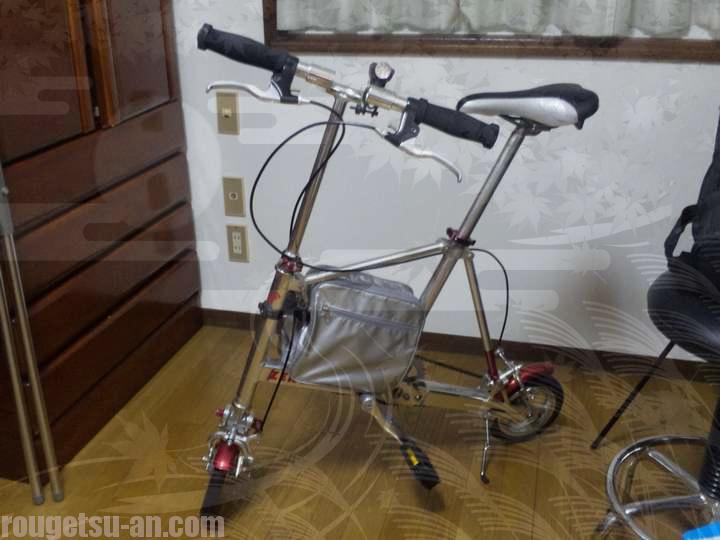
Similar to my GB250 Clubman (motorcycle), I’m averse to customization and prefer the original look. I’ve hardly made any modifications; just added some LED lights from the 100-yen store. Oh, and inside the silver-colored travel bag, you’ll find work gloves, a hex wrench, and a chain key—all sourced from the same place (yes, you guessed it—Daiso!).
After a long hiatus, it’s time for its comeback, so I’m pumping air into the tires. Speaking of which, they’re 8 inches in size—slightly larger than the tires on kick scooters. This makes it less prone to stumbling over bumps, although I still try to avoid them.

Now, the photo might not show it clearly, but the pedals and rear tire aren’t directly connected by a drive chain. Instead, there’s an intermediate sprocket. While this bike lacks a derailleur, adjusting the gear ratio with this middle sprocket allows for surprisingly decent speeds. I’d say it comfortably handles around 20 km/h—an impressive feat for such a small-wheeled bike. Whoever designed this was quite clever!
I wonder if we can call these functional works of art? There’s an artistic aspect to them, don’t you think? And maintenance-wise, it’s not too shabby. However, being a lively Latin creation, I have some reservations about its precision. Rumor has it that the handlebars have welding defects and might snap under excessive load…(((;゚Д゚)))
Unlike Japan’s world-renowned industrial products, this one requires delicate handling. (^^)
As for folding, here’s how it looks:
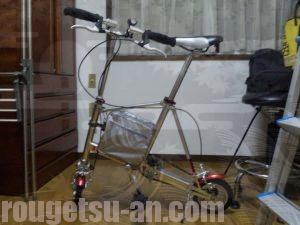

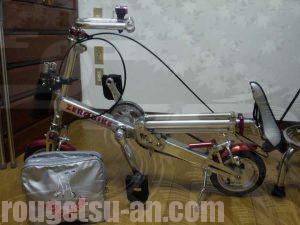
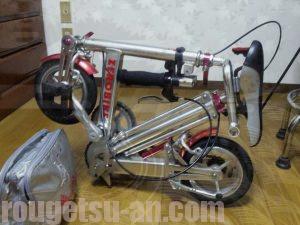
And once it’s neatly tucked into the included travel bag, it’s complete. Well done, indeed.
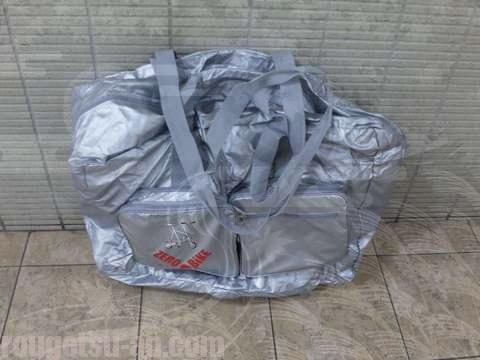
In terms of weight, it’s around 8 kg—light enough to carry with one hand. Size-wise, it fits snugly into the rear gate of a compact car. Another advantage of the Mini Velo is that it serves as a convenient transportation when you’re at outdoor events like fireworks displays or races, and you need to cover some distance from a distant parking spot.
Alright, let’s dive in. I know it’s mostly photos, but don’t call it laziness, okay? (^^;)
Starting from Shinjuku
On Saturday, February 25th, around 3:00 PM, I began my journey from Shinjuku. Although it’s also the starting point for the Tokyo Marathon, that’s not the reason I chose it. Honestly, going downhill from a higher elevation is just more enjoyable, you know! (^^;)
First stop: A kebab shop right next to the Shinjuku Post Office, straight ahead from Shinjuku Station West Exit.
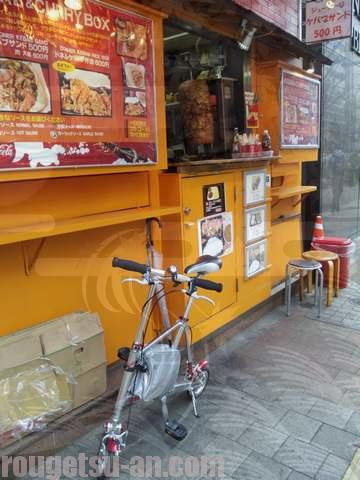
From the very beginning, I took a spontaneous detour—I had some shareholder benefits and free coupon tickets that were about to expire. It’s turning into a frugal lifestyle where I manage everything for free! (^^;)
I got two recommended spicy kebabs here. The taste was decent, but I’ll spare you the photo since they didn’t look so good. (^^;)
Next, I headed towards Keio Plaza Hotel. They’re apparently distributing Tokyo Marathon maps and tourist guides there.
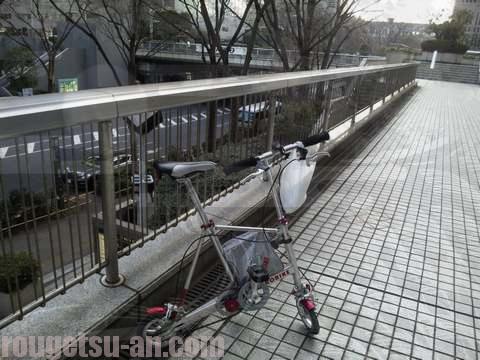
Already, banners and preparations for tomorrow are underway. It’s a quiet yet exciting atmosphere, akin to the eve of a festival.
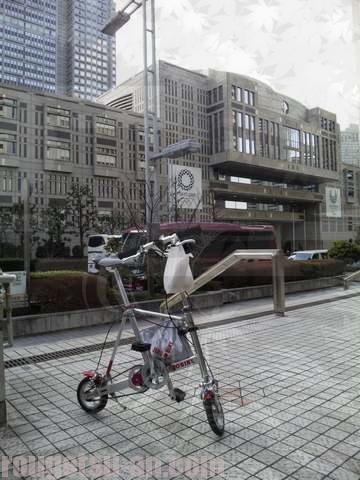
The front gate (or is it?) of the Tokyo Metropolitan Assembly Building (congress) features the Olympic emblem prominently displayed. With Tokyo Governor Koike frequently appearing on TV, chanting “Tokyoites first,” this view is quite familiar.
At Keio Plaza Hotel’s entrance, they requested that I fold my bicycle if I wanted to go to the front desk. Despite just going to get a pamphlet…well, it seemed like too much trouble, so I decided to head straight to the Tokyo Metropolitan Government Building. Not much flexibility there! (´・ω・`)
Upon arriving at the Government Building, despite it being the weekend, foreign tourists still lined up for the elevator to the observation deck. And downstairs (?) there was bustling activity as event organizers prepared for tomorrow’s marathon. It feels like the night before a school cultural festival—just watching is enjoyable♪
On the first floor of the Government Building, there’s a tourist information center.

It wasn’t too crowded here. The people lined up in the back are waiting for the elevator to the observation deck. Seems like everyone loves heights!
I got something like this:
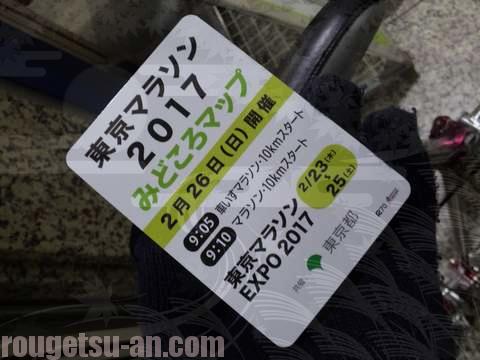
And when you unfold it, it looks like this:
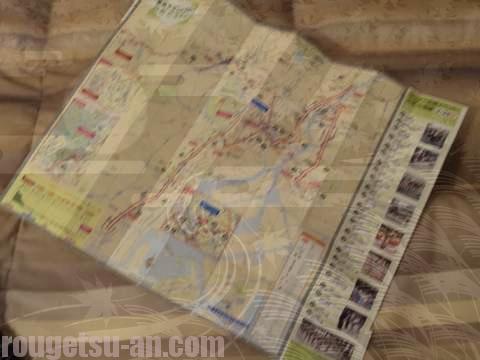
Pretty neat, right? It’s easy to use, popping open in a second from your pocket. Kudos to the creator! ( ・∀・)=b
Around the Mitsui Building, there were plenty of signs like this.

On Sunday morning, it seems 36,000 people will gather here in Shinjuku. Regular runners might take over 30 minutes just to pass the starting line. Quite impressive!
So, after quite a bit of wandering around Shinjuku, it’s time to set off properly.
From Yasukuni Street to Tokyo Dome
I walked past the Shinjuku Police Station and onto Yasukuni Street. Continuing under the Yamanote Line tracks, I passed by Kabukicho. By the way, I saw the Godzilla monument on the rooftop of the former Koma Theater for the first time.
Beyond the Shinjuku Ward Office, I arrived at Hanazono Shrine.
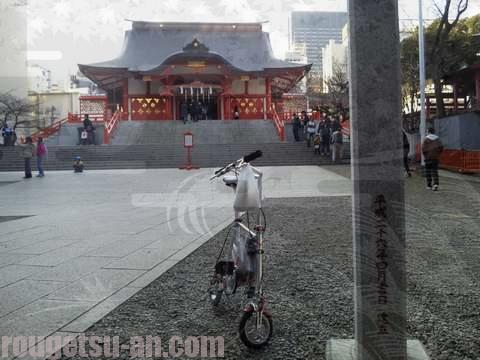
It’s surprisingly uncrowded here. During the year-end Tori-no-ichi festival, the line for prayers usually stretches quite a bit. Is this what it looks like on a regular day?
I continued along Yasukuni Street, passed Akebono Bridge, and arrived in front of the Ministry of Defense in Ichigaya.
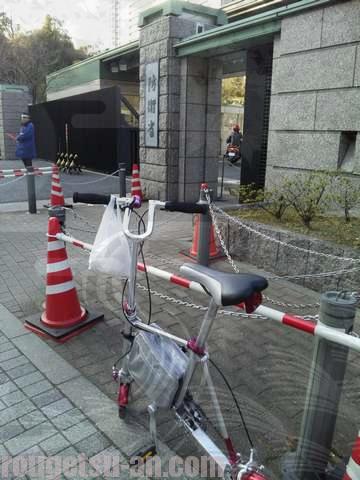
I was a bit nervous about taking photos, but the staff there were very friendly!
Continuing straight on Yasukuni Street, I reached the intersection with Sotobori Street. There stands Kamegaoka Hachimangu Shrine.

Surprisingly, many people don’t know about this shrine. While Tsurugaoka Hachimangu in Kamakura is famous, this one remains relatively unknown.
Across the street is the Ichigaya Fish Center.
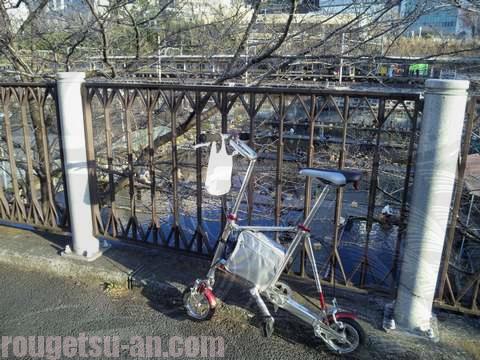
The atmosphere here is calm on this peaceful Saturday evening. By the way, this place isn’t just a fishing pond; it’s also a tropical fish store. They have everything from equipment to aquatic plants to ornamental fish. A bit pricey, though!
Continuing along Sotobori Street toward Iidabashi, I made a little detour to Kagurazaka.
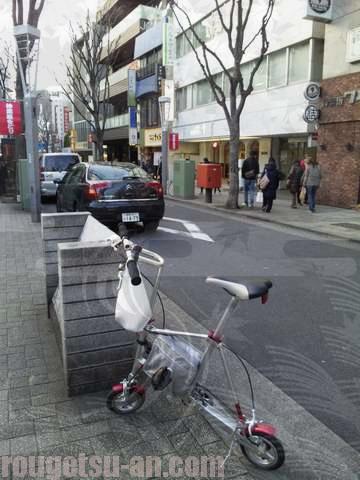
Speaking of Kagurazaka, it’s well known for Bishamonten.

Not many people around. I remember about ten years ago during the airing of the drama featuring Arashi’s Ninomiya, there were hordes of ladies with filming location maps, pointing and checking around here and there. Time flies!
I turned left after the Iidabashi Hello Work (unemployment center) and entered a side street. A little further down, I reached Koishikawa Korakuen Garden.
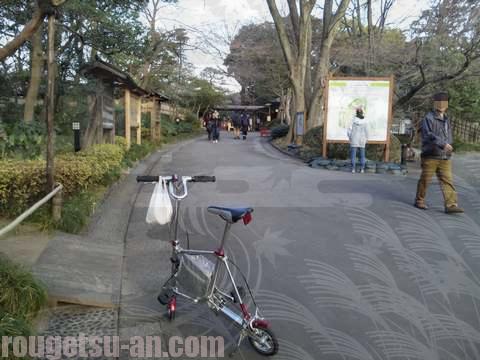
Unfortunately, I don’t have time today to explore it properly. The best time to visit here is definitely during cherry blossom season. Will it soon be filled with visitors?
Heading toward the Bunkyo Ward Office via the backstreets, I arrive at the well-known Tokyo Dome.
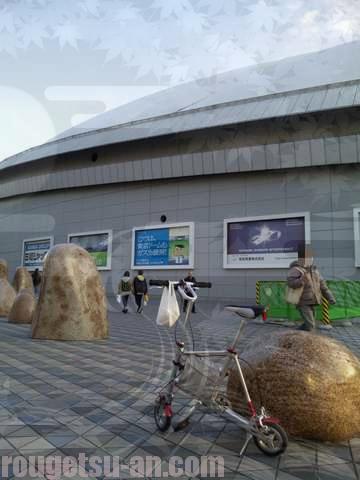
I wonder what event is happening today? There were quite a few elderly folks with mysterious appearances (no offense!)—definitely not Johnny’s fans. Perhaps horse racing enthusiasts?
From Yushima to Nihonbashi
After crossing Hakusan Street, I entered a narrow alley. There used to be a historic and nostalgically charming public bathhouse called Kikusui-yu near Kikuzaka, but it was demolished a few years ago. When I went to check, it had been replaced by an unremarkable apartment building (T_T). How fleeting.
Before its demolition, a research lab from the University of Tokyo apparently created three-dimensional digital data (similar to Google Street View) of the bathhouse. Perhaps one day, we’ll be able to virtually bathe there!
Continuing uphill toward Hongou, I encountered another nostalgic building.
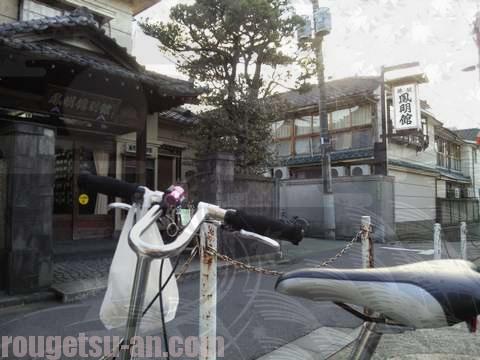
This one was still standing. It’s Houmeikan old inn, a location often used for filming. I heard a young person who seemed like a student say, “I’m back!” as they closed the sliding door with a distinctive sound. Truly full of Showa-era retro vibes—irresistible! (^^)
Following the back alley, I reached the University of Tokyo Akamon (Red Gate).
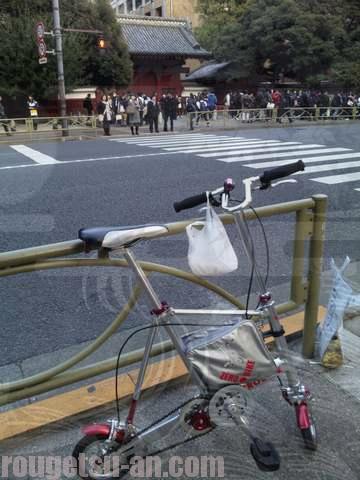
I wonder if there was some exam today? The place was bustling with students.
Turning left at the intersection of Hongou 3-chome, I headed down Kasuga Street toward Ueno and arrived at Yushima Tenjin (Tenmangu).
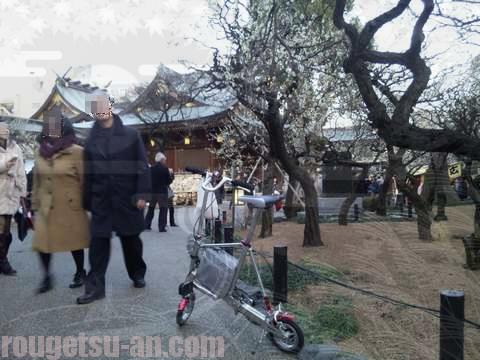
It’s time for the annual plum festival. Looks like most of the blossoms have already fallen.

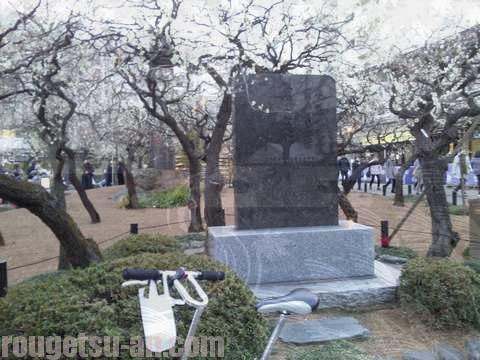
Well, you see, it’s hard to admit, but last week, I happened to visit the Soga Plum Grove in Odawara. Let’s just say the scale there is quite different. (^^;)
But when plum trees bloom in Yushima, it truly feels like spring, doesn’t it?
Next, I continued toward Ochanomizu. It was exactly 5:00 PM. I arrived at Yushima Seido, but…
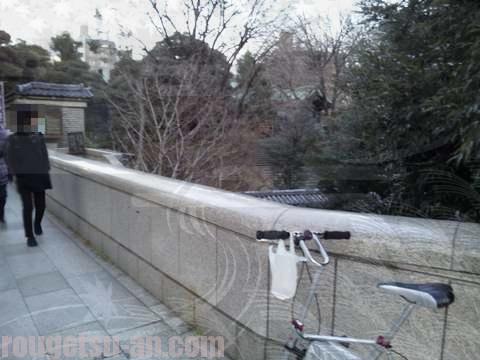
Unfortunately, it was already closed. Temples and shrines almost always close at 5:00 PM. It was time to head to the hotel. Down the slope to Akihabara.
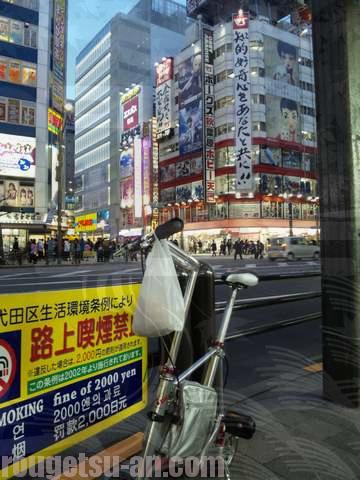
The evening was setting in quickly, and although the photos might not turn out well, Akihabara looks even more beautiful with its lights on during dusk. Funny how that works, right? (^^)
I crossed the Manseibashi Bridge, and proceeded straight ahead. Passing under the guard of Kanda Station, I could see the lights of Nihonbashi.
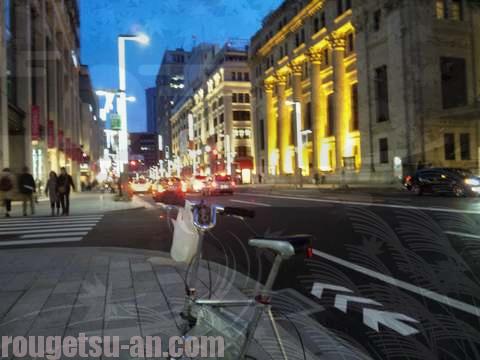
Hmm, it’s completely dark now. The Mitsukoshi sign isn’t visible. There are two large neon signs with white letters on a red background that say “MITSUKOSHI,” but they’re not showing up in the photo.
It’s been a while since I visited, but the Mitsukoshi in Nihonbashi (a long-established department store) is still gorgeously grand. My great-grandmother, born in the 19th century, lived in Kyobashi near here and used to love shopping here—it was her sacred shopping ground. Although Mitsukoshi stores across the country have faced challenges, I hope the lights keep shining at the Nihonbashi main store. I’d hate to see it turn into a something like Yamada Denki or Uniqlo.
I took a photo right in the middle of the Nihonbashi Bridge. As dusk settled, the lights came on.
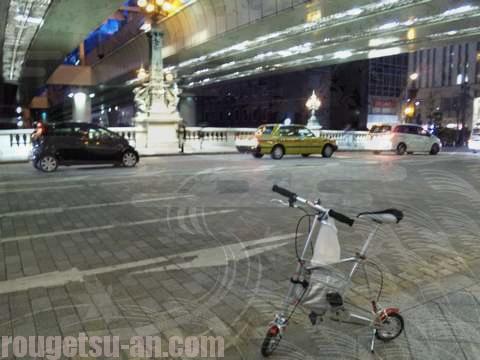
After crossing the bridge, I turned left at the corner of Nomura Securities and made a detour to Kabutocho.
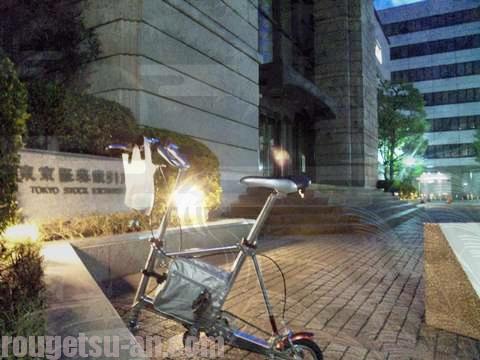
I’ve arrived at the Tokyo Stock Exchange. Not a soul in sight—absolutely deserted. And it was already pitch dark.
Crossing Eitai Street, behind the Chuo Police Station, I reached today’s accommodation: Center Hotel Tokyo.
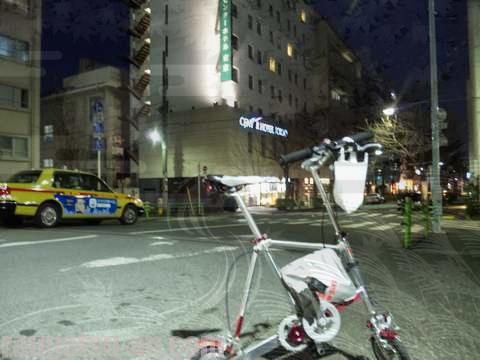
They’ve recently added a Seven-Eleven on the first floor. Quite convenient.
I completed the check-in and went shopping.
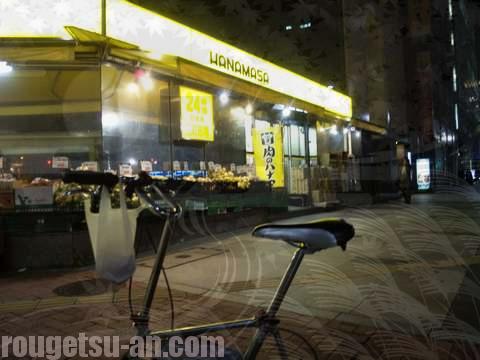
A three-minute bike ride away is Niku no Hanamasa, the Kyobashi branch. It’s pretty much the only place to shop around here. Let’s grab a refreshing beer for the evening!
Day 2: Nihonbashi → Ginza → Marunouchi
Guess what? Starting this year, the Center Hotel Tokyo now includes breakfast. Way to go! And surprisingly, the food was quite delicious for a business hotel. The addition of a Seven-Eleven is also a nice touch. Keep up the good work, and may your dividends flow generously. Thank you!
Now, leisurely checking out around 10 a.m., I peeked down Eitai-dori.
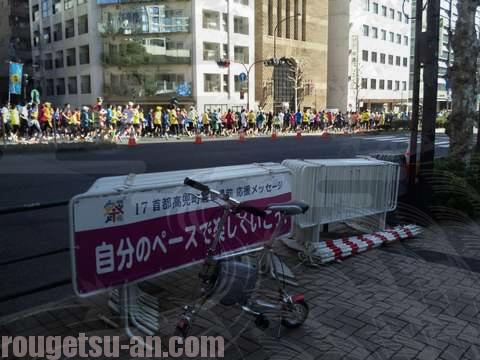
The marathon is already underway. Moreover, they changed the course this year, so the passage through Nihonbashi seems pretty early. Even regular runners are showing up in good numbers. And as usual, there are plenty of people running in costumes!
I strolled toward Otemachi, taking my time. The vicinity of Belsalle BLD. was bustling with cheering crowds.
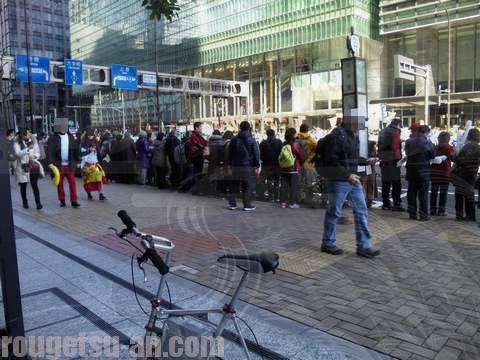
It’s impressive how many people have gathered early in the morning.
Next, I turned left onto Chuo-dori and continued my leisurely walk toward Ginza. But around Yanagi-dori, something seemed off. Were there fewer people around? Huh? Last year, at this time, there were quite a few runners heading from Ginza to Asakusa. Now, it’s mostly just the sporadically speedy wheelchair racers heading toward Ginza.
Could the change in the course be causing a time shift? I pondered this as I walked. But then, I asked one of the volunteers, and they confirmed that due to the course alteration, it’s now a one-way route (from Nihonbashi to Ginza only). Ah, right, I remember now.
Feeling a bit bored, I decided to head toward the Imperial Palace area. Since I couldn’t cross the course (Chuo-dori), I used the subway entrance, carrying my bicycle. Crossing to the Yurakucho side, I pedaled along. Once I left the main road, there were fewer people.
Passing through the gates of Yurakucho Station, past Bic Camera, and just before the Imperial Theatre… I got stuck again. Is this part of the course too?
This area is quite chaotic—I have no idea where to go or what’s off-limits. And the spectators, eager to catch a glimpse of the finish line, keep pouring down from the Nijubashi Station. But alas, the finish line area is off-limits for viewing. Hmm, maybe the announcements weren’t clear enough. The crowd of lost souls seems a bit panicked.
The volunteers and police officers are kind and helpful, but since they’re not locals, when I ask, “I want to go to ●●,” they seem a bit clueless. Well, I can’t blame them. Somehow, I managed to navigate the underground passage and reached the Wadakura Fountain Park behind the Palace Hotel.
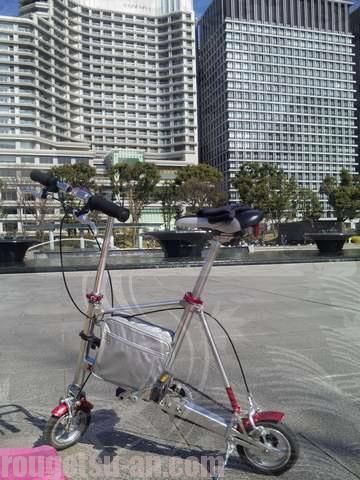
A little aside: Once again, the many volunteers are tirelessly active with smiles on their faces. Ah, Japan is peaceful—it warms my heart. I can’t help but think that most of these volunteers, especially those guiding people through the underground, are marathon enthusiasts. It’s a bit tough for them to be underground the whole time during their beloved marathon. Perhaps even only this underground guide should be replaced by a part-time job instead? Or maybe I’m just meddling too much—my apologies!
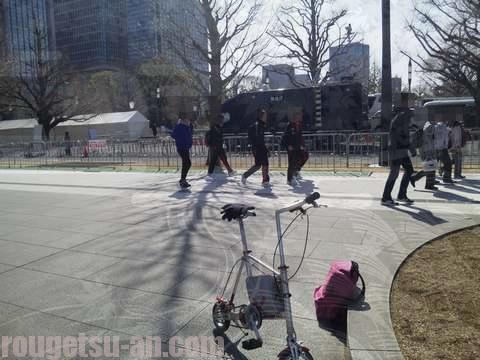
On the opposite side lies the true finish area. Completely barricaded and hidden behind curtains, it’s impossible to see inside. The presence of police vehicles and riot police gives it an intense atmosphere.
Around the Imperial Palace, from Akasaka to Aoyama and onward to Yoyogi.
Anyway, it’s time to bid farewell to the marathon. I’ve escaped the labyrinth of traffic restrictions, so now I’ll leisurely head back home.
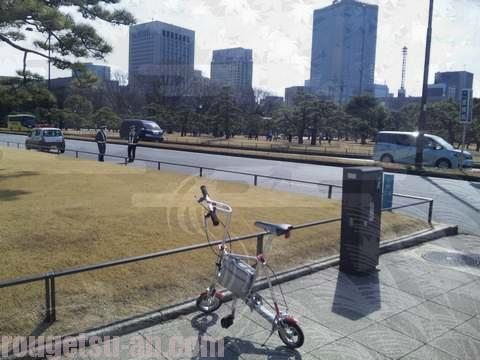
This is the intersection near Nijubashi (Double Bridge). Although the area is spacious, it doesn’t seem to be used much for marathon operations. When I look toward the palace moat…
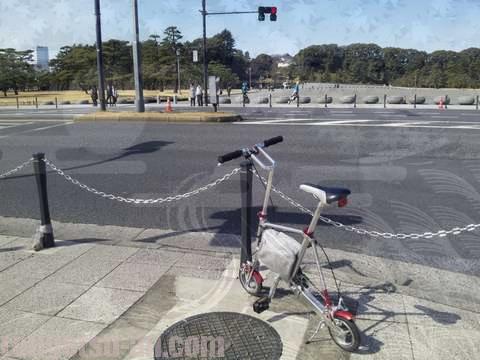
Although there is Nijubashi straight at the back, it’s too far in the photo to see anything clearly (^^;)
And here, something unusual happens. It seems the air is leaking from my rear tire. It’s heavy. It’s not completely flat, but still…. For now, I’ll walk while pushing the bicycle. I wonder if there’s a place around here where I can borrow an air pump. There don’t seem to be any bike shops or gas stations nearby.

This is Sakuradamon. It looks small in the photo. I should have gotten closer. After this, I discovered a police box (koban) outside Sakuradamon. I borrowed an air pump from the officer and replenished the air. Now I can ride comfortably. I’ll continue pedaling along slowly.
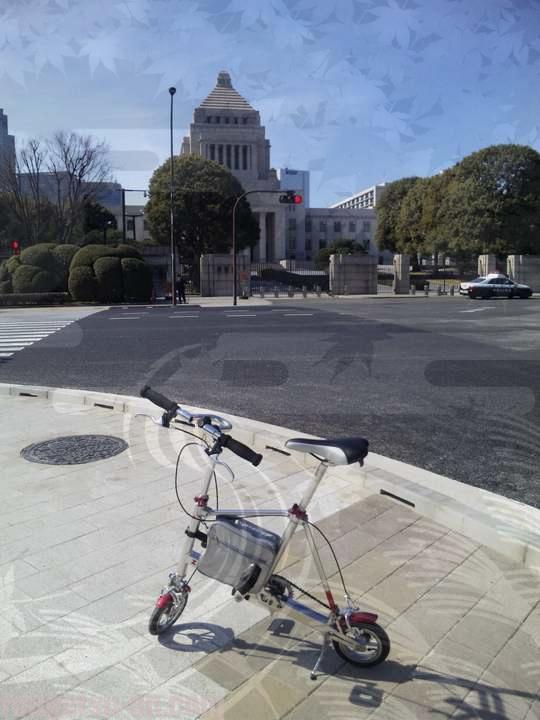
I’ve reached the front of the National Diet Building as I proceed along the edge of the moat. In contrast to the hustle and bustle of Marunouchi, this area is deserted. It’s so quiet. If I continue along the left side (House of Representatives side) of the Diet, I’ll arrive in front of the Prime Minister’s Office.

While taking photos, a police officer greeted me with a smile and said, “Hello.” But their eyes didn’t quite match the smile—perhaps they’re trained to approach suspicious individuals. (^^;)
Descending the slope to the right of the Prime Minister’s Office leads to Akasaka.
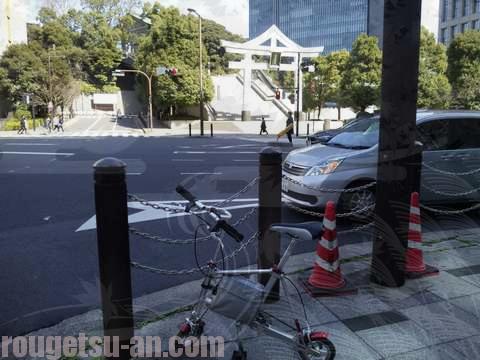
This is the Hie Shrine. It has a peculiar topography, like a pinpoint hill within the Hie Shrine area.
I’ll continue straight toward Akasaka Station on the subway. Passing by TBS (TV broadcaster), I head toward Nogizaka. This area is mostly uphill, so I’m lazily walking most of the way.
Just before Nogi Shrine, there’s a well-known major entertainment agency that represent a nationally popular idol group like SMAP or ARAHI, etc.
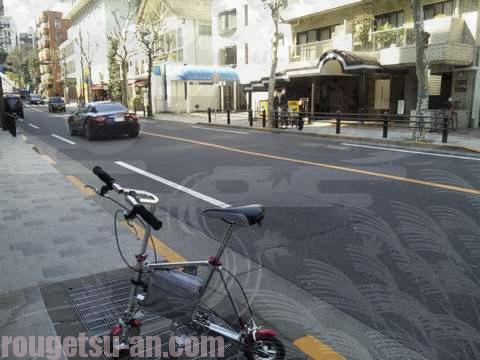
Before Nogizaka Bridge, I entered Nogi Shrine for the first time.

Although I’ve been passing through this area for decades, it’s my first time inside. It’s a peaceful and pleasant place. There happened to be an antique market, and it was moderately lively. And I didn’t know this, but Nogi’s former residence is displayed at the back entrance.
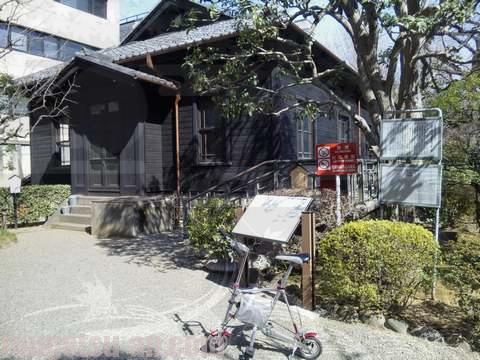
Climbing the stairs within the grounds (apparently called Nogi Park), I arrive here. And from here, I can directly reach the street above. I didn’t know that—I could have avoided the dull asphalt slope by taking a shortcut.
Back on level ground, I start pedaling again, but… it seems the air is leaking from the tire once more. Oh well, maybe I should give up and take the Chiyoda Line (subway) from Nogizaka to go home? But then I remembered there’s a police box at the Aoyama-itchome intersection, so I decided to walk there for now.
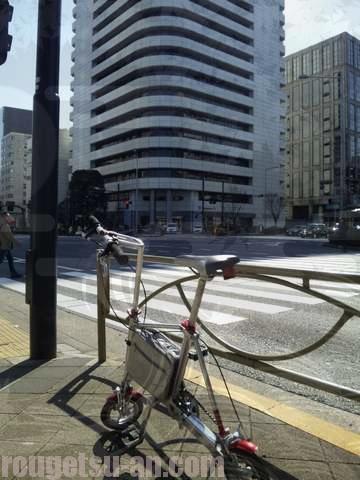
This is Honda’s headquarters. “The legend of Aoyama-itchome” is a thing of the past. In the past, after F1 races on weekends, banners proclaiming “●● GP winner!!” would automatically be displayed here on Monday. Nowadays, there’s no sign of winning, and it’s questionable whether they can even run properly and finish one race. I wonder if they’ve stopped preparing banners altogether?
At the Aoyama-itchome police box, I borrowed an air pump again. However, it doesn’t seem to hold up well. Let’s continue with makeshift treatment while extending its life. Heading toward Omotesando along Aoyama-dori.
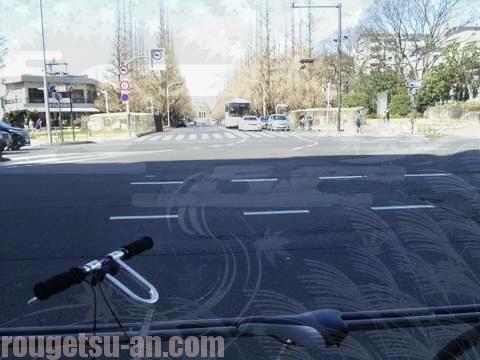
The entrance to Jingu Gaien. Just like Nijubashi, this angle doesn’t work well. Straight in front, Meiji Memorial Picture Gallery looks like a speck.
Skipping ahead a bit, from Omotesando to Meiji Jingu Shrine.
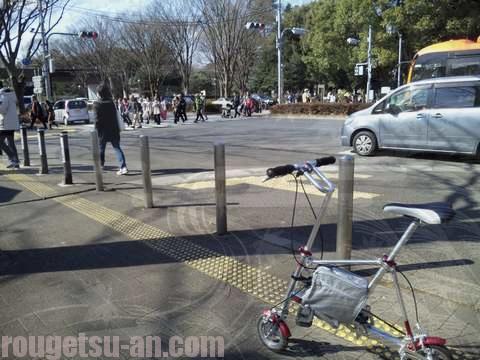
Yoyogi Park. Around here, my rear tire is failing again. It’s reached its limit. Even going downhill, it feels like it might stop. This is why foreign-made bicycles… Bridgestone bikes hardly ever break down.
At the bottom of the slope, there’s a police box at the intersection with Inokashira-dori. This is my third pit stop. Well, today I’ve been greatly assisted by the officers (Thanks!!). Before the air I put in leaks out completely, I’ll quickly ride to Yoyogi-Uehara. So, around 1:00 PM, I took the train back home.
Summary and Map
As a recap, I’ll provide a map for your reference.
This route is quite enjoyable and relatively light. Over two days, it’s a total of approximately 30 kilometers. I took my time and explored various places, so it took about 6 hours in total. I don’t feel too fatigued. However, if you go any further, your rear end might start hurting—it could be poor quality of the saddle, perhaps?
You don’t necessarily need to fold and carry a mini-velo for transport; another option is to use rental bicycles. Just keep in mind that you’ll need to ride back to return the rented bike. You can’t simply take the subway when you’re tired, so be mindful of that.
Spring is approaching, bidding farewell to winter’s chill. How about occasionally taking a stroll in the heart of the Tokyo city?
Thank you for accompanying me until the end today.

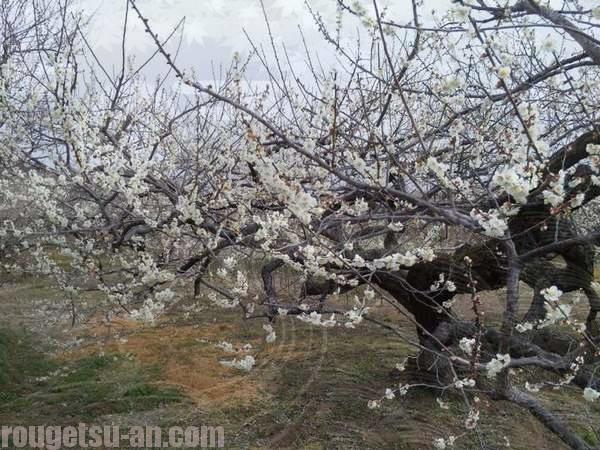
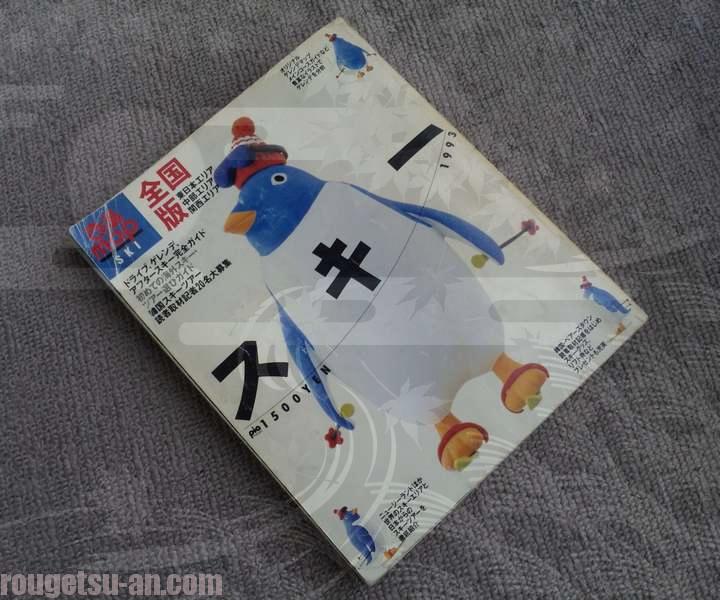
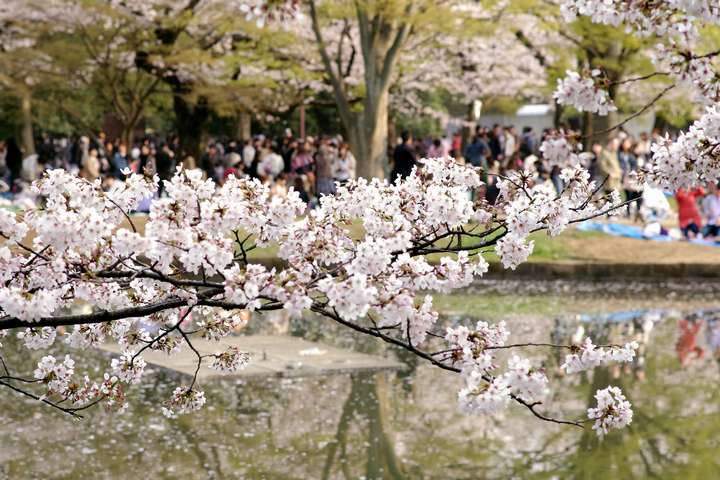
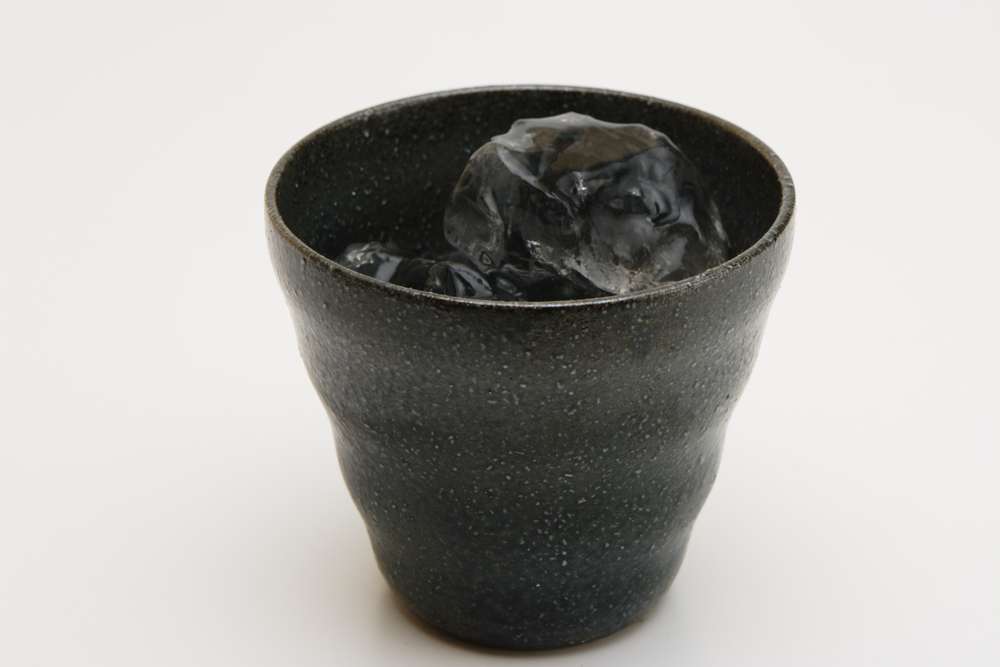
コメント